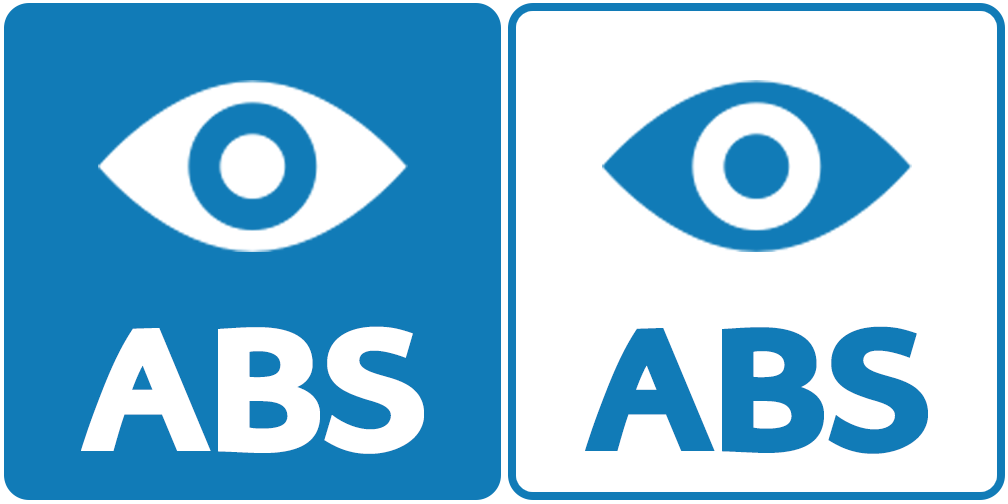Saiz Macías, Eduardo
Projects
Measurement Adaptation and Reporting in LTE (MARiL) in Measuring Mobile Broadband Networks in Europe (MONROE)
H2020 project MONROE, Associated Partner in Open Call 1
First MONROE Open Call for Experiments and Extensions
06/2016 - 11/2017
06/2016 - 11/2017
QoXCLOUD: Plataforma para la medida de la calidad experimentada (QoX) por los usuarios de los servicios de telecomunicación a través de la nube
Gobierno Vasco - SAIOTEK 2013
Komunikazio Ingeniaritza Saila - KIS (UPV/EHU)
01/2013 - 07/2014
01/2013 - 07/2014
QoBIZ: Análisis y evaluación de la Calidad de Negocio (QoBiz) en redes avanzadas con gestión de calidad de servicio adaptada
Gobierno Vasco - SAIOTEK 2012-2013
Komunikazio Ingeniaritza Saila - KIS (UPV/EHU)
07/2012 - 06/2013
07/2012 - 06/2013
QoXFERA: Arquitectura para el análisis y evaluación de las diferentes vertientes de la calidad de servicio (QoX) en redes avanzadas
Gobierno Vasco - SAIOTEK 2011-2012
DET (UPV/EHU)
07/2011 - 12/2012
07/2011 - 12/2012
LabQoS: Creación de entornos experimentales para la evaluación de la calidad de servicio en redes de datos
Gobierno Vasco - SAIOTEK 2010-2011
DET (UPV/EHU)
07/2010 - 06/2012
07/2010 - 06/2012
Man-QoS: Mantenimiento de QoSMETER
UPV/EHU
DET (UPV/EHU)
03/2009 - 06/2010
03/2009 - 06/2010
ObavaQoS: OBservatorio para el Análisis y la eVAluación de la Calidad de Servicio (QoS) orientada a la satisfacción del usuario
Gobierno Vasco - SAIOTEK 2009-2010
DET (UPV/EHU)
01/2009 - 12/2010
01/2009 - 12/2010
Publications
Toward standardized internet speed measurements for end users: current technical constraints
Eneko Atxutegi, Fidel Liberal, Eduardo Saiz, Eva Ibarrola
University of the Basque Country (UPV/EHU)
IEEE Communications Magazine
Volume: 54, Issue: 9, Pages: 50-57
September 2016
IEEE Communications Magazine
Volume: 54, Issue: 9, Pages: 50-57
September 2016
JCR: 5.125
ABSTRACT
Many years of research have been dedicated toward the definition of sophisticated quality of service (QoS) measurement tools and methods. Nonetheless, the results given to end users by most commonly used online speed measurement tools are still far from being accurate. Among other factors, the reliability of the measurement methods is affected by different static and dynamic constraints of involved network nodes and TCP/IP implementations. The clarification of such uncertainties will help establish the baseline for the definition of any comparable and technically feasible measurement methodology, in terms of measurement periods, number of concurrent connections, and convergence time. This article presents a comprehensive description of the research work and proposes mechanisms, aiming to obtain a full understanding of cross-layer effects during a speed test targeting end users.
Many years of research have been dedicated toward the definition of sophisticated quality of service (QoS) measurement tools and methods. Nonetheless, the results given to end users by most commonly used online speed measurement tools are still far from being accurate. Among other factors, the reliability of the measurement methods is affected by different static and dynamic constraints of involved network nodes and TCP/IP implementations. The clarification of such uncertainties will help establish the baseline for the definition of any comparable and technically feasible measurement methodology, in terms of measurement periods, number of concurrent connections, and convergence time. This article presents a comprehensive description of the research work and proposes mechanisms, aiming to obtain a full understanding of cross-layer effects during a speed test targeting end users.
QoXcloud: A cloud platform for QoE evaluation
Eduardo Saiz, Eva Ibarrola, Leire Cristobo, Ianire Taboada
Journal of ICT Standardization
Volume 2. Issue 3. Article 2. Pages 223-246
March 2015
Volume 2. Issue 3. Article 2. Pages 223-246
March 2015
ABSTRACT
The current financial situation, together with the new market conditions, has led to major changes in the ICT sector over the last few years. Many services that in the past were only offered by operators are now held by third parties through the cloud, which has caused a shift towards new business models at the expense of a more traditional market. Furthermore, these economic changes have conducted to socio-cultural transformations with great impact on the user’s behaviors. In this paper a cloud platform for the measurement and evaluation of the Quality of Experience (QoE) is presented. The platform is based in a model (QoXphere) that ensures the user satisfaction in terms of Quality of Service (QoS) and the provider economic benefits, as demanded in current market situation. In addition, the proposed cloud architecture intends to help in the advance of the work item recently opened in ITU-T to establish an ITU recognition procedure of testing laboratories with competence in ITU-T Recommendations by providing a unified cloud environment in which to validate them.
The current financial situation, together with the new market conditions, has led to major changes in the ICT sector over the last few years. Many services that in the past were only offered by operators are now held by third parties through the cloud, which has caused a shift towards new business models at the expense of a more traditional market. Furthermore, these economic changes have conducted to socio-cultural transformations with great impact on the user’s behaviors. In this paper a cloud platform for the measurement and evaluation of the Quality of Experience (QoE) is presented. The platform is based in a model (QoXphere) that ensures the user satisfaction in terms of Quality of Service (QoS) and the provider economic benefits, as demanded in current market situation. In addition, the proposed cloud architecture intends to help in the advance of the work item recently opened in ITU-T to establish an ITU recognition procedure of testing laboratories with competence in ITU-T Recommendations by providing a unified cloud environment in which to validate them.
A new global quality of service model: QoXphere
Eva Ibarrola (1), Eduardo Saiz (1), Luis Zabala (1), Leire Cristobo (1), Jin Xiao (2)
(1) University of the Basque Country - UPV/EHU, Spain
(2) Pohang University of Science and Technology
IEEE Communications Magazine
Volume 52, Issue 1. Pages 193-199
January 2014
(2) Pohang University of Science and Technology
IEEE Communications Magazine
Volume 52, Issue 1. Pages 193-199
January 2014
ABSTRACT
The telecommunications sector has experienced significant changes over the past few years. The advent and rise of new applications and services, together with a competitive market, has led to a complex scenario in which quality of service plays a major role. Under this condition, novel QoS regulation and standardization initiatives are required. During the last few years new terms and concepts, such as quality of experience or QoS perceived, have been included in the updated and new QoS-related standards as to better integrate the user's point of view, as opposed to only network performance parameters. The influence of the user's satisfaction on the quality of business has also been given increased attention in the regulation and standardization bodies recently. The result is a loose collection of metrics and models that are not standardized and do not integrate all aspects of quality. Such integration is necessary to assure the successful development of this sector. This paper presents a new and integrated QoS model (QoXphere) that is spherical, adaptive, and multi-layered.
The telecommunications sector has experienced significant changes over the past few years. The advent and rise of new applications and services, together with a competitive market, has led to a complex scenario in which quality of service plays a major role. Under this condition, novel QoS regulation and standardization initiatives are required. During the last few years new terms and concepts, such as quality of experience or QoS perceived, have been included in the updated and new QoS-related standards as to better integrate the user's point of view, as opposed to only network performance parameters. The influence of the user's satisfaction on the quality of business has also been given increased attention in the regulation and standardization bodies recently. The result is a loose collection of metrics and models that are not standardized and do not integrate all aspects of quality. Such integration is necessary to assure the successful development of this sector. This paper presents a new and integrated QoS model (QoXphere) that is spherical, adaptive, and multi-layered.
Conference Papers
A Unified Framework of Internet Access Speed Measurements
Eduardo Saiz, Eva Ibarrola, Eneko Atxutegi, Fidel Liberal
ITU Kaleidoscope 2015 - Trust in the Information Society
Barcelona, Spain
9-11 December 2015
Barcelona, Spain
9-11 December 2015
ABSTRACT
The evolution of Internet access technologies, together with the wide diversity of customer devices, has led to a complex scenario where measuring basic metrics with accuracy has become a rather complicated task. Although nowadays there are a lot of tools to assess the rate of Internet speed, most of them share neither the methodology nor the infrastructure to produce comparable results.
In this regard, the development of a unified approach to measure the Internet speed would be beneficial for all ICT players. The establishment of such proposal would inspire better confidence in consumers through the provision of precise comparisons, and it would also be very useful to operators, regulators and providers. Towards this aim, the ITU-T has been working on the definition of a unified methodology and measurement framework to assess the rate of Internet speed.
This paper presents a detailed description of the work that is being done at present in the definition of the aforementioned framework.
The evolution of Internet access technologies, together with the wide diversity of customer devices, has led to a complex scenario where measuring basic metrics with accuracy has become a rather complicated task. Although nowadays there are a lot of tools to assess the rate of Internet speed, most of them share neither the methodology nor the infrastructure to produce comparable results.
In this regard, the development of a unified approach to measure the Internet speed would be beneficial for all ICT players. The establishment of such proposal would inspire better confidence in consumers through the provision of precise comparisons, and it would also be very useful to operators, regulators and providers. Towards this aim, the ITU-T has been working on the definition of a unified methodology and measurement framework to assess the rate of Internet speed.
This paper presents a detailed description of the work that is being done at present in the definition of the aforementioned framework.
Why we still need standardized Internet speed measurement mechanisms for end users
Eneko Atxutegi, Fidel Liberal, Eduardo Saiz, Eva Ibarrola
ITU Kaleidoscope 2015 - Trust in the Information Society
Barcelona, Spain
9-11 December 2015
Barcelona, Spain
9-11 December 2015
ABSTRACT
After several years of research towards sophisticated QoS measurement tools and methods, the results given to end-users by most commonly used on-line speed measurement tools are still far from being precise. In order to define a reliable Internet speed measurement methodology for end- users, the impact that the static and dynamic constraints of network nodes and TCP/IP implementations could impose must be first carefully analyzed. Such constraints will deter- mine the measurement methodology to be defined in terms of measurement periods, number of concurrent connections and convergence time by deployment of controlled simula- tion/emulation environments and real world comparisons. This paper presents a detailed description of the works and leaves hints to be followed, aiming to get a full understanding of cross-layer effects during a speed test targeting end-user.
After several years of research towards sophisticated QoS measurement tools and methods, the results given to end-users by most commonly used on-line speed measurement tools are still far from being precise. In order to define a reliable Internet speed measurement methodology for end- users, the impact that the static and dynamic constraints of network nodes and TCP/IP implementations could impose must be first carefully analyzed. Such constraints will deter- mine the measurement methodology to be defined in terms of measurement periods, number of concurrent connections and convergence time by deployment of controlled simula- tion/emulation environments and real world comparisons. This paper presents a detailed description of the works and leaves hints to be followed, aiming to get a full understanding of cross-layer effects during a speed test targeting end-user.
A cloud platform for QoE evaluation: QoXcloud
Eduardo Saiz, Eva Ibarrola, Leire Cristobo, Ianire Taboada
ITU Kaleidoscope 2014 - Living in a converged world - impossible without standards?
Saint Petersburg, Russian Federation
3-5 June 2014
Saint Petersburg, Russian Federation
3-5 June 2014
ABSTRACT
The current financial situation, together with the new market conditions, has led to major changes in the ICT sector over the last few years. Many of the services that were once only offered by operators are now being provided by third parties through the cloud. This situation has promoted new business models against the traditional ones. Furthermore, these economic changes have conducted to socio-cultural transformations with great impact on the user's behaviors. In this paper a cloud platform for the measurement and evaluation of the Quality of Experience (QoE) is presented. The platform is based in a model (QoXphere) that ensures the user satisfaction in terms of Quality of Service (QoS) and the provider economic benefits, as demanded in current market situation. In addition, the proposed cloud architecture intends to aid to advance in the work item opened recently in ITU-T to establish an ITU recognition procedure of testing laboratories with competence in ITU-T Recommendations.
The current financial situation, together with the new market conditions, has led to major changes in the ICT sector over the last few years. Many of the services that were once only offered by operators are now being provided by third parties through the cloud. This situation has promoted new business models against the traditional ones. Furthermore, these economic changes have conducted to socio-cultural transformations with great impact on the user's behaviors. In this paper a cloud platform for the measurement and evaluation of the Quality of Experience (QoE) is presented. The platform is based in a model (QoXphere) that ensures the user satisfaction in terms of Quality of Service (QoS) and the provider economic benefits, as demanded in current market situation. In addition, the proposed cloud architecture intends to aid to advance in the work item opened recently in ITU-T to establish an ITU recognition procedure of testing laboratories with competence in ITU-T Recommendations.
QoXphere: A New QoS Framework for Future Networks
Eva Ibarrola, Eduardo Saiz, Jin Xiao, Luis Zabala, Leire Cristobo
ISBN: 978-1-4673-4676-4
ITU Kaleidoscope 2013 - Building Sustainable Communities
Kyoto, Japan
April 22-24, 2013
ITU Kaleidoscope 2013 - Building Sustainable Communities
Kyoto, Japan
April 22-24, 2013
ABSTRACT
The telecommunications sector has experienced significant changes over the past few years. The advent and rise of new applications and services, together with a competitive market, has led to a complex scenario in which quality of service (QoS) plays a major role. Under this condition, novel QoS regulation and standardization initiatives are required. During the last few years new terms and concepts, such as Quality of Experience (QoE) or QoS Perceived (QoP), have been included in the updated and new QoS-related standards as to better integrate the user’s point of view, as opposed to only network performance parameters. The influence of the user’s satisfaction on the Quality of Business (QoBiz) has also been given increased attention in the regulation and standardization bodies recently. The result is a loose collection of metrics and models that are not standardized and do not integrate all aspects of quality. Such integration is necessary to assure the successful development of this sector. This paper presents a new and integrated QoS model (QoXphere) that is spherical, adaptive and multi-layered.
The telecommunications sector has experienced significant changes over the past few years. The advent and rise of new applications and services, together with a competitive market, has led to a complex scenario in which quality of service (QoS) plays a major role. Under this condition, novel QoS regulation and standardization initiatives are required. During the last few years new terms and concepts, such as Quality of Experience (QoE) or QoS Perceived (QoP), have been included in the updated and new QoS-related standards as to better integrate the user’s point of view, as opposed to only network performance parameters. The influence of the user’s satisfaction on the Quality of Business (QoBiz) has also been given increased attention in the regulation and standardization bodies recently. The result is a loose collection of metrics and models that are not standardized and do not integrate all aspects of quality. Such integration is necessary to assure the successful development of this sector. This paper presents a new and integrated QoS model (QoXphere) that is spherical, adaptive and multi-layered.
Estrategia de Integración de la Plataforma velocimetro.org en la Infraestructura Global de Medidas de Calidad de Servicio QoSMETER
Eduardo Saiz, Iñaki Etxebarria, Luis Burgos
XXIV Simposium Nacional URSI
Santander, Spain
September 16-18, 2009
Santander, Spain
September 16-18, 2009
ABSTRACT
The need of a neutral Quality of Service (QoS) measurement system is usually demanded by Internet Service Providers (ISP) as well as their customers in order to evaluate their networks, and, therefore, establish comparisons with other providers. The service velocimetro.org and the measurement infrastructure QoSMETER, both developed by Networking Quality and Security Research Group (NQaS) at the University of the Basque Country, are a reliable solution to this demand. The aim of this paper is to show that, in due to the prolific growth of the Internet technologies over the last years, the merging of both projects is required. Several modifications are needed for that purpose and a procedure plan is required to minimize the effect of the plausible integration malfunctions in the services that are already deployed and accessible to users.
The need of a neutral Quality of Service (QoS) measurement system is usually demanded by Internet Service Providers (ISP) as well as their customers in order to evaluate their networks, and, therefore, establish comparisons with other providers. The service velocimetro.org and the measurement infrastructure QoSMETER, both developed by Networking Quality and Security Research Group (NQaS) at the University of the Basque Country, are a reliable solution to this demand. The aim of this paper is to show that, in due to the prolific growth of the Internet technologies over the last years, the merging of both projects is required. Several modifications are needed for that purpose and a procedure plan is required to minimize the effect of the plausible integration malfunctions in the services that are already deployed and accessible to users.
Diseño e implementación de un sistema de gestión y mantenimiento para el servicio velocimetro.org
Iñaki Etxebarria, Luis Burgos, Ianire Taboada, Eduardo Saiz
XXIII Simposium Nacional URSI
Madrid, Spain
September 22-24, 2008
Madrid, Spain
September 22-24, 2008
ABSTRACT
This article tries to specify the basis of a project about a new system to control and manage an Internet quality test that measures the access speed of Internet users. We will explain the current situation of the service to look for the necessities, and then try to propose tools to solve those necessities. These tools must be integrated in a common interface to give the administrator of the service an easy-to-use environment as long as a powerful system to manage the quality test tool. To conclude, we will propose the necessary technologies to implement the different parts of the system.
This article tries to specify the basis of a project about a new system to control and manage an Internet quality test that measures the access speed of Internet users. We will explain the current situation of the service to look for the necessities, and then try to propose tools to solve those necessities. These tools must be integrated in a common interface to give the administrator of the service an easy-to-use environment as long as a powerful system to manage the quality test tool. To conclude, we will propose the necessary technologies to implement the different parts of the system.







